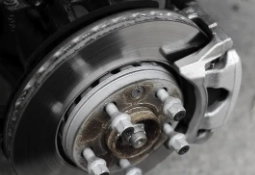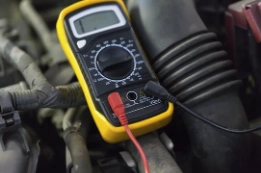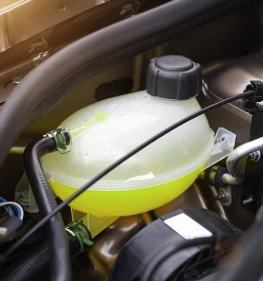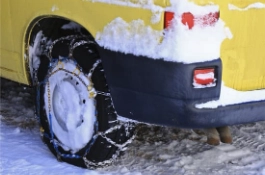Winter Auto Safety Checklist

Winterizing your vehicle is essential to ensure it operates safely and reliably during the colder months, especially in regions with harsh winter weather. Here are some common winterizing services for vehicles:
1. Tire Inspection and Maintenance:
- Check tire pressure and adjust it according to the manufacturer's recommendations.
- Consider switching to winter or all-season tires, which provide better traction in snow and icy conditions.
2. Brake Inspection:
- Check the brake system for wear and tear.
- Ensure the brakes are in good working order to improve stopping power on slippery roads.
3. Battery Inspection and Testing:
- Check the battery's voltage and connections.
- Cold weather can be tough on batteries, so ensure it's in good condition and replace it if necessary.

4. Fluid Check and Replacement:
- Ensure the vehicle's fluids (e.g., oil, coolant, wiper fluid) are at the right levels and replace them if needed.
- Use winter-grade engine oil for better cold-weather performance.
5. Wiper Blade Replacement:
- Install winter wiper blades that are designed to handle snow and ice buildup.
- Top up the windshield washer fluid with an anti-freeze solution.
6. Heater and Defroster Inspection:
- Check the heating and defrosting systems to make sure they work effectively.
- Clear any obstructions from the vents.

7. Antifreeze/Coolant Check:
- Ensure the antifreeze/coolant mixture is suitable for freezing temperatures.
- Verify that the cooling system is in good condition to prevent the engine from freezing.
8. Exhaust System Inspection:
- Inspect the exhaust system for leaks, as carbon monoxide exposure is a significant risk during winter when windows are often closed.
-
9. Engine Block Heater Installation:
- For extreme cold climates, consider adding an engine block heater to help with cold starts.
10. Emergency Kit Preparation:
- Equip your vehicle with an emergency kit, including items like blankets, flashlights, a shovel, sand or kitty litter for traction, and non-perishable food.

11. Snow Chains or Tires with Studs:
- In areas with heavy snowfall, consider installing snow chains or using studded winter tires for better traction.
12. Regular Maintenance:
- Keep up with regular vehicle maintenance and address any pre-existing issues before winter arrives.




